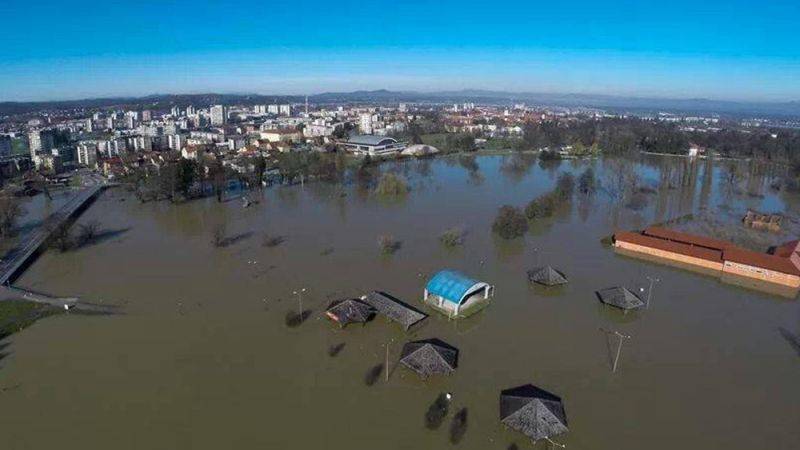Global Warming, Cement= Disaster
ROME – As the Italian saying goes, “Piove sul bagnato” (It rains where it’s already a-wash.) And indeed it is, with floods sweeping away cars, in which hapless victims have been drowned. Or – as happened Sunday in picture-perfect Laveno Mombello near Lago Maggiore – the rainfall was so persistent that, with a gigantic roar, it made a huge section of hillside collapse, in a landslide that tore straight through a house and into two upstairs bedrooms. A 16-year-old girl and her 70-year-old grandfather were both killed as they slept. It is a sad irony that the very word Laveno comes from the Latin labes meaning landslide.
This November such landslides and serious floods caused by seemingly endless rainstorms have left 16 victims in one month; ten died only this past week. Two thousand people have been evacuated from their homes, and there is concern for others who are completely isolated, like the 180 families at Brigna near Voltri. Genoa and its region of Liguria are especially hard hit, with damages estimated at $1.3 billion and 300 roads blocked. But Lombardy, the Veneto, Emilia-Romagna and Piedmont have been hard hit, and there is great concern for the Po River in coming days as the intense rains show no sign of abating. At Bolzaneto a cemetery wall crumbled away, and 70 coffins were washed into a stream that had become swollen into a river. To fight back, 160 soldiers have been mobilized in Liguria to remove landslides and another 40 in Piedmont to reinforce the Po River banks.
Who is to blame? Global warming is certainly a cause, but closer to home is another culprit, cement, thanks to the casual (not to say criminal) dispensation of building permits that began in the 1960s. According to art historian Tomaso Montanari, the building programs excogitated by the national governments of the past decades, but also by regional and local authorities, permitted the destruction of five million hectares (19,300 sq. miles) of farmland in the half century after 1950. For architect Arturo Sandrini, writing in 1997, the building speculators took Italy into “a delirium of construction.”
The mayors of the various cities, beginning with Marco Doria of Genoa, have been literally assailed by irate citizens, some of whom have lost everything. In turn the mayors have attacked the national government headed by Matteo Renzi for having failed to provide the funding for, among other things, the reinforcement of river banks and of buildings at risk, and the replanting the trees whose roots prevent hillsides from collapsing.
Because Renzi is in Asia attending the G-20 meeting in Brisbane, his undersecretary Graziano Delrio went to Genoa for a first-hand look at the disaster. “Other countries like Holland, Germany and Switzerland have a culture of the territory and take better care of their rivers than we do,” he said. “Within the coming year funds for disaster intervention, currently blocked, will be made available: “Our Civil Protection agency must have sufficient funding.”
Delrio’s promises have so far failed to keep the government he represents from continuing to come under fire. The aim of one of Renzi’s pet projects, “Sblocca Italia” (Unleash Italy), is to stimulate the economy by financing construction of highways and tunnels. But to this end it also whittles away at some of the existing restrictions whose purpose is protect the environment.
In the hard-hit North of Italy, writes Montanari, “They thought that ‘development’ was a perfect synonym for cement – and still think so.” But building speculation is like a drug, he goes on to say. “Everything happens faster, and a community, without anyone forcing it, elects politicians willing to corrupt the laws, because corrupt laws permit corrupting the environment.”
The brutal storms began Genoa Oct. 10, when a 57-year-old man drowned near the Brignole train station. Only a few days later a woman near Trieste was killed in a landslide and two elderly couple were drowned in a raging river. At the same time hundereds of people have been saved by hard-working firemen, including three who were pulled from their car near Alessandria in Piedmont as they were drowning.





































i-Italy
Facebook
Google+
This work may not be reproduced, in whole or in part, without prior written permission.
Questo lavoro non può essere riprodotto, in tutto o in parte, senza permesso scritto.